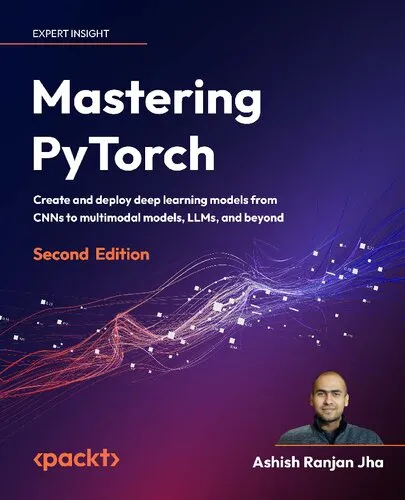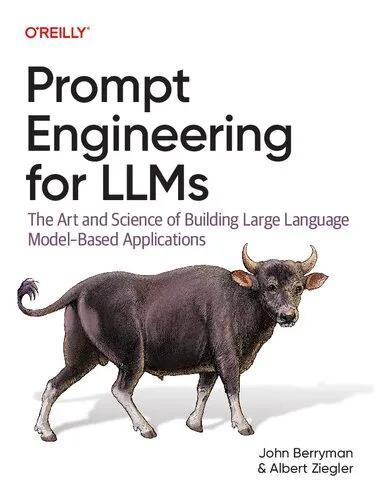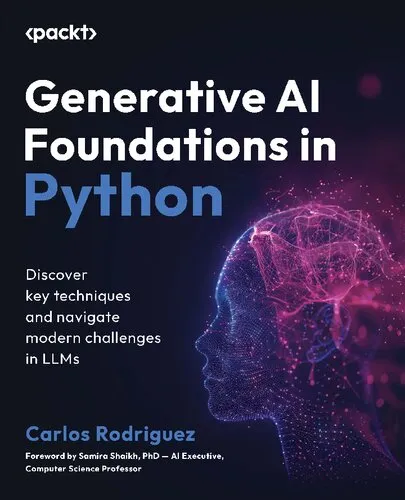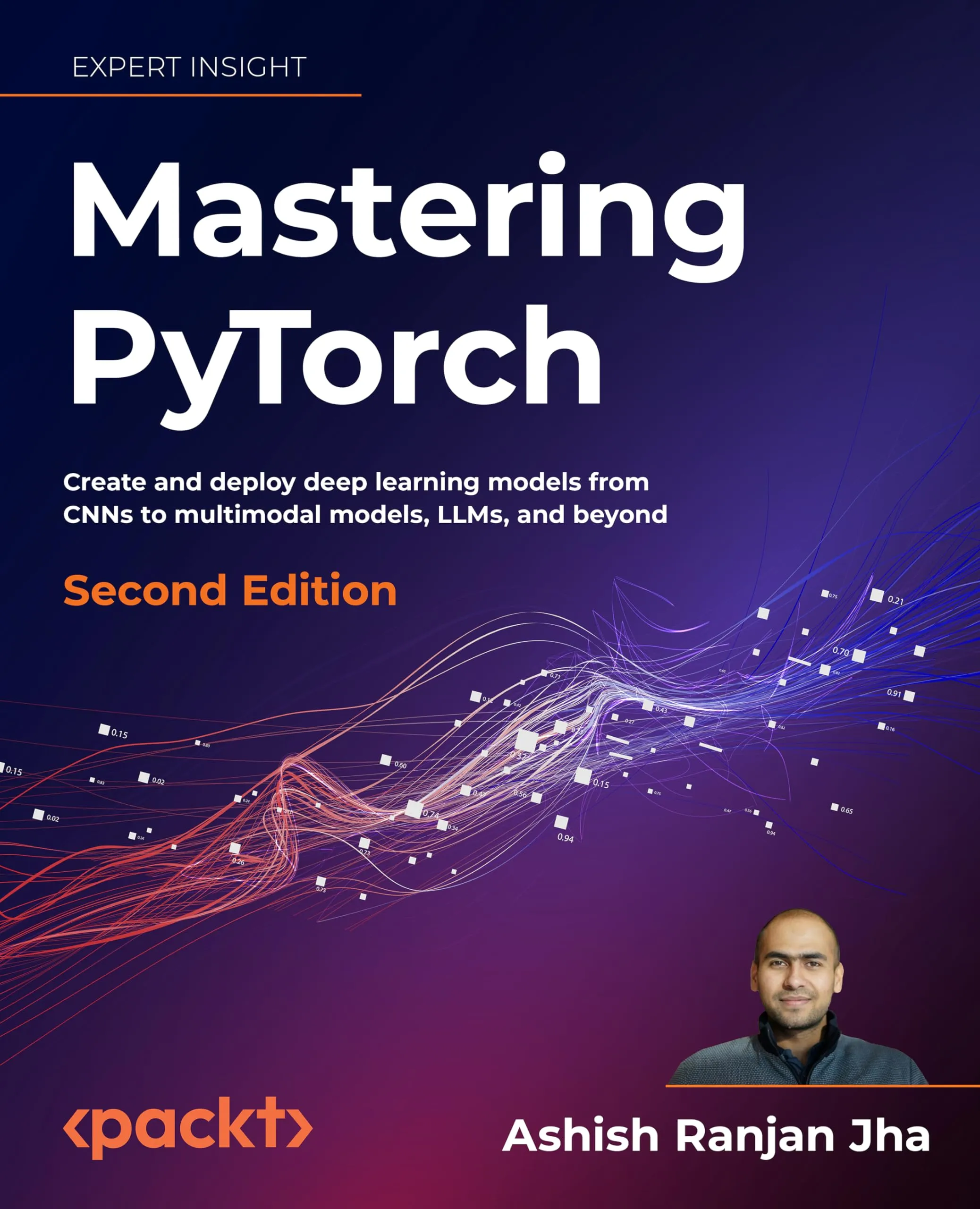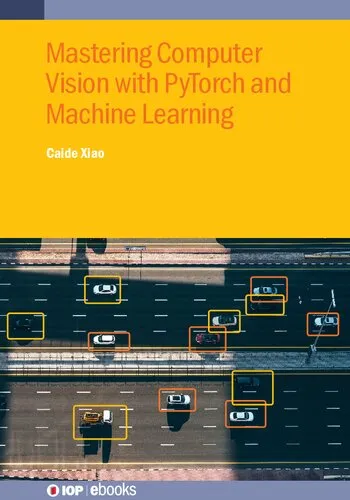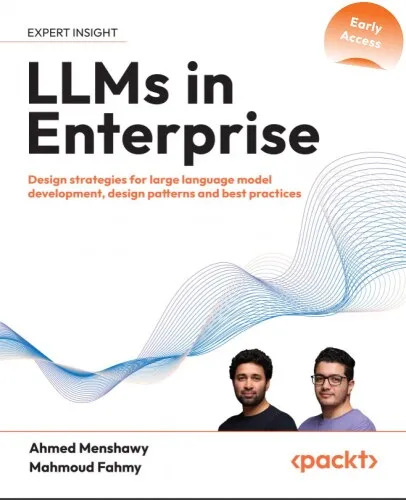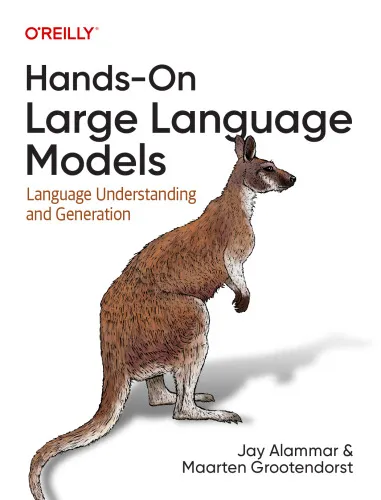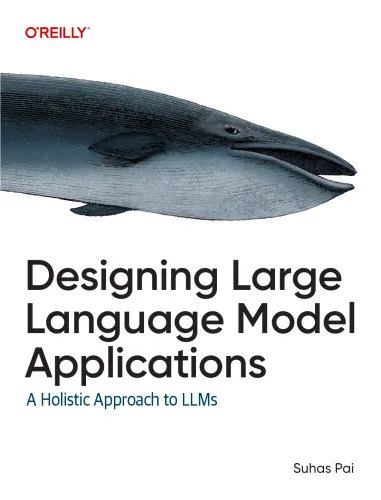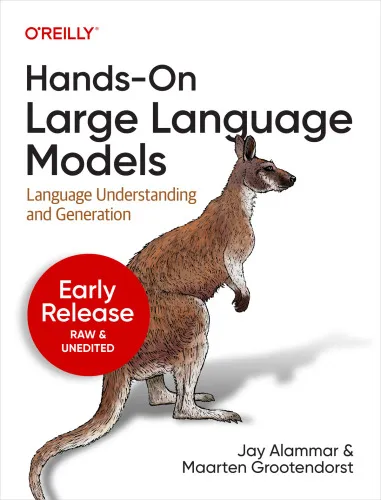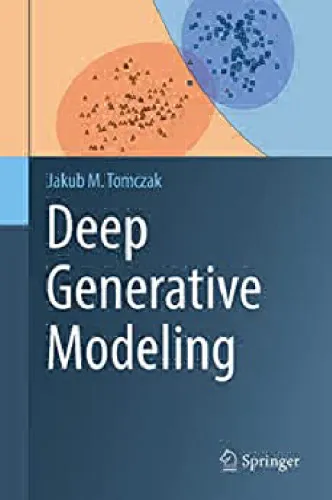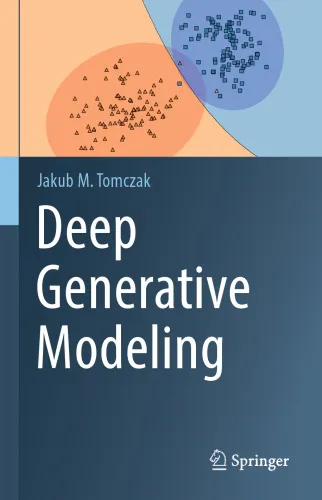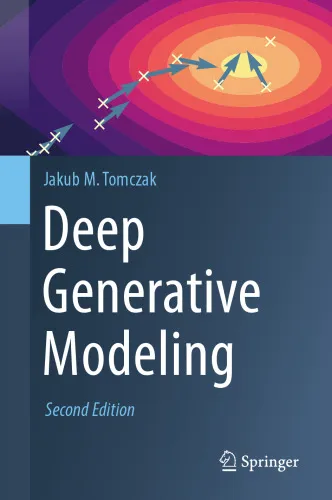Mastering PyTorch: Create and deploy deep learning models from CNNs to multimodal models, LLMs and beyond, 2nd Edition
4.3
Reviews from our users

You Can Ask your questions from this book's AI after Login
Each download or ask from book AI costs 2 points. To earn more free points, please visit the Points Guide Page and complete some valuable actions.Related Refrences:
Analytical Summary
The second edition of Mastering PyTorch: Create and deploy deep learning models from CNNs to multimodal models, LLMs and beyond is a decisive resource for engineers, researchers, data scientists, and AI practitioners aiming to push the boundaries of machine learning implementation and deployment. Written by Ashish Ranjan Jha, this edition delves deeper into the PyTorch ecosystem, aligning it with contemporary AI innovations while maintaining a practical, hands-on approach.
From the fundamentals of convolutional neural networks (CNNs) to the complexities of multimodal architectures and large language models (LLMs), the text provides a structured learning path that marries conceptual clarity with industry-level application. Advanced readers will appreciate the deployment strategies discussed, which address real-world constraints such as scalability, performance optimization, and reproducibility. The content is informed by extensive practice and case studies, ensuring that readers can translate theory into impactful AI solutions.
Unlike introductory materials, this book assumes familiarity with Python programming and basic machine learning concepts, allowing it to focus sharply on the nuances that distinguish robust AI models from prototypes. The 2nd Edition expands coverage to include multimodal AI workflows that combine text, vision, and audio, along with detailed explorations of training efficiencies, transfer learning, and inference optimization techniques tailored to PyTorch’s dynamic computation graph design.
Key Takeaways
Readers will come away from this book equipped not only to build sophisticated neural models but also to deploy them effectively in production-grade environments, an often under-discussed challenge in AI literature.
Among the core lessons are: mastering PyTorch’s tensor operations; designing custom datasets and data loaders for complex pipelines; interpreting and fine-tuning CNN architectures; implementing attention mechanisms; building multimodal networks that integrate multiple data types; and applying PyTorch features for LLM integration. These skills are reinforced through real application examples, reducing the gap between experimentation and deployment.
This book also emphasizes reproducibility and maintainability — essential for collaborative research and enterprise AI projects. By following the deployment strategies provided, readers can scale their deep learning models efficiently across cloud and edge environments.
Memorable Quotes
“PyTorch’s flexibility enables exploration without sacrificing production readiness.”Unknown
“Integration of multimodal inputs represents the frontier in AI capability.”Unknown
“Successful AI deployment is as much about infrastructure as it is about model accuracy.”Unknown
Why This Book Matters
In an era where deep learning innovations are evolving at an unprecedented pace, having a single resource that navigates from concept to deployment is invaluable.
Most AI professionals understand the challenge: building a high-performing model is only half the battle. Deploying it efficiently across different environments while preserving reliability and scalability is where many projects falter. This book directly addresses that gap. By leveraging PyTorch’s robust frameworks, readers learn not just to create but to operate models in ways that withstand real-world demands.
Furthermore, the inclusion of large language models and multimodal architectures positions the reader to engage with some of the most transformative AI technologies today. It draws a direct link between theoretical advancements and business or research applications, increasing both relevance and impact.
Inspiring Conclusion
If your goal is to bridge the gulf between groundbreaking AI models and operational success, Mastering PyTorch: Create and deploy deep learning models from CNNs to multimodal models, LLMs and beyond, 2nd Edition offers the roadmap you need.
By joining the ranks of professionals who can both innovate and implement, you amplify your ability to impact industries, research fields, and communities. Whether you intend to enhance your technical portfolio, contribute to open-source ecosystems, or spearhead enterprise AI transformations, this book equips you with the tools and confidence to act decisively. Now is the time to read, discuss, and share the insights contained within, ensuring that your deep learning journey is marked by both creativity and execution excellence.
Free Direct Download
You Can Download this book after Login
Accessing books through legal platforms and public libraries not only supports the rights of authors and publishers but also contributes to the sustainability of reading culture. Before downloading, please take a moment to consider these options.
Find this book on other platforms:
WorldCat helps you find books in libraries worldwide.
See ratings, reviews, and discussions on Goodreads.
Find and buy rare or used books on AbeBooks.
1236
بازدید4.3
امتیاز0
نظر98%
رضایتReviews:
4.3
Based on 0 users review
Questions & Answers
Ask questions about this book or help others by answering
No questions yet. Be the first to ask!
